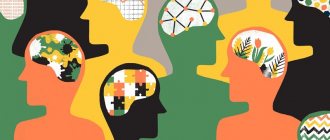Communication is a complex socio-psychological process of establishing and developing contacts between people, generated by the needs for joint activities and including the exchange of information, the development of a strategy for interaction, perception and understanding of a partner.
Socially, it acts as a means of transmitting human culture and experience. Its specificity lies in the fact that the interlocutors reveal their subjective world to one another and show individual characteristics.
Communication varies according to:
- Number of participants: interpersonal, group, mass;
- Method: verbal (language, speech), non-verbal (facial expressions, gestures);
- Position of those communicating: contact (personal), remote (for example, through the media);
- Conditions: official (organized meetings), informal (on your own initiative);
- Tasks: installation (for the purpose of getting to know each other), informational (messaging);
- Means: direct (hand, head, voice sounds), indirect (trace, radio, television), direct (the ability to see, hear, feel), indirect (through intermediaries).
Types of communication by subject and means of communication
Depending on who the subjects are and what means are involved in the communication processes, the following types of communication can be distinguished.
Communications using information technology, technical means
This model is one of the most significant modern types of communication. We are talking about the use of information technology and various technical devices. Telecommunication systems, e-mail, social networks, and management information tools (MIS) are used for communication. The UIS provides an opportunity for communication between employees of an organization in order to find out the information necessary to solve a production issue; in addition, with the help of these tools, employees can study literature on a topic that is important to them.
Interpersonal communications
The type of interpersonal communications includes the direct interaction of interlocutors or groups of people with each other through verbal and non-verbal methods of communication. Studying this type of communication is one of the most important and primary tasks. Interpersonal communications are influenced by a huge number of factors.
The result of such communication is most dependent on the feedback received - thanks to it, the addressee can understand whether the message went through, whether the interlocutor received it, or whether he perceived it correctly.
Communication channels adequate to the senses:
- Visual;
- Auditory;
- Tactile (touch);
- Somatosensory (kinesthetic, feeling your body).
People have characteristics in the perception of the outside world and another person (social perception). They are divided into visual, auditory, and kinesthetic learners:
- visual people – they prefer to see everything with their own eyes, they like to tower over their partner;
- auditory - perceive reality through auditory images: music, speech, sounds;
- kinesthetics – experience (emotionally) through the state of their body.
Logically, we can name the following communication channels: direct, indirect, controlled indirect:
- direct channel – transmission of information in explicit form;
- indirect (indirect) – information obtained for the purpose of control or addition to what was previously accepted;
- controlled indirect channel - a message perceived as unintentional is presented as completely intentional (a convincing tone in a dubious situation).
Principles of Effective Communication
- The principle of consistency.
Semantic correspondence between the information received and the response. For example, a greeting requires a return greeting. A question should be answered, not another question. In this way, each speech fragment will have a conclusion.
- The principle of preferential structure.
Confirming and rejecting responses are given differently. Consent is usually expressed without delay, extremely concisely and clearly.
The boss asks the subordinate: “The report must be submitted by tomorrow”
The subordinate replies: “Okay.”
Disagreement is accompanied by a preliminary pause, followed by a more voluminous response, including arguments and explanations.
Boss: “Analyze the department’s weekly statistics by evening.”
Subordinate: “(pause) I would love to complete this assignment, but right now I’m busy with the previous task.”
A sender who knows the principles of effective communication will hear a pause of disagreement after a request and soften the request.
Boss: “Analyze the weekly statistics for the department by evening and then you can leave work early tomorrow.”
Such a conversation will get rid of unnecessary tension, and the order will be completed.
- The principle of cooperation.
Consists of 4 groups of postulates: quality, quantity, attitude, method.
Quality: “The statement must be true.”
Quantity: “The statement must contain no less and no more information than required”
Attitude: “Stay on topic.”
Method: “Be clear.”
Means of communication:
- Language is a system of words, expressions and rules for combining them into logical speech;
- Intonation is emotional expressiveness that can give a different shade to any phrase;
- Facial expressions, posture, gaze - can enhance or refute the meaning of what was said;
- Gestures – generally accepted or expressive (for expressiveness);
- The distance of the interlocutors depends on the degree of their trust, cultural and national traditions.
In speech, tempo, volume, and intonation are distinguished, which makes it possible to determine the emotional state of the individual and his attitude to the transmitted message.
A person cannot consciously control the entire sphere of means of communication for a long time. Therefore, often even what he wants to hide is revealed, for example, through the movement of his hands, the expression of his eyes, the position of his legs, etc.
Introduction
Since people are social creatures, communication plays an important role in the life of every person. Communication permeates all aspects of society, social groups and individuals. It is also possible, without exaggeration, to consider communication as the fundamental basis for the existence of society.
You must understand that the evolution of human civilization, the development of technical, cultural, economic, social and all other spheres would be impossible without this process, which is characteristic of all living things in our world, and especially of people.
It is known that since ancient times, philosophers, sociologists, political scientists, psychologists and representatives of other sciences have always been, to one degree or another, interested in the problem of human communication.
After all, given that communication is a process of transferring information, in particular, between people (or groups of people), aimed at some specific result, it is obvious that the more effective the communication process itself, the greater the likelihood that it will lead to the expected result.
Low communication efficiency leads to problems in the life of a person and society. At the same time, since communications permeate all areas of human activity, an ineffective communication process can lead to the most undesirable results. For example, on the scale of a specific person, ineffective communication can lead to family discord and disruption at work, and ineffective communication on an international scale can lead to irreversible consequences.
That is why studying and understanding the problems of the communication process, its effectiveness, factors and ways to increase efficiency is a necessity for the successful life of a modern person.
Communication strategy:
- Open - closed (Closed communication - the reluctance or inability of one of the partners to clearly convey their point of view, information);
- Monological - dialogical;
- Role-playing (social-role-playing) – personal (“heart-to-heart”).
An important issue in communication is openness, i.e. not only the sincerity of the speaker, but also the ability to perceive the partner impartially. High culture gives you confidence that you will be understood correctly.
Communication tactics is the implementation of a strategy in a specific situation based on knowledge and mastery of techniques, rules and techniques of communication.
Types of communication by number of communicants
Professional communicators pay great attention to such a parameter as the number of participants, because the chosen technology of work in each specific situation depends on it. For example, when talking to yourself, with one partner, or with many interlocutors, the level of voice volume will vary significantly.
- Intrapersonal communication is a dialogue with one’s own self, that is, the presentation of a person’s internal monologue, a conversation with an inner voice, conscience or one’s own ego in the form of dialogue.
- Interpersonal communication in most cases is of a primary nature; a certain ideal model of communication is correlated with it, in which two interlocutors take part (however, an observer, an included and an outside observer may be present, the communication process can take place in the presence of witnesses, in a crowded place, and so on).
- Group communication refers to a conversation within a certain group, between groups of people, between an individual and a group (for example, between the head of a company and his subordinates). What is more important here is the difference not in quantity, but in quality, in particular, in each situation there will be a specific goal of communication - between interlocutors in a small group or in a large one (chat rooms and forums on the Internet; message boards and so on) .
- In the case of a mass form of communication, we are talking about conveying information to a large number of people, most often having different interests and communicative experience (messages on television or radio, release of CDs, information on the Internet - the differences here include the level of audience coverage, universal “obligation” ", individual-group selectivity; transmission of messages via telephone or mail can only be included here quantitatively, without taking into account mass and targeted - in other words, group mailing of mail messages).
Mass and in some cases group communication involve very interesting phenomena. The role of the sender can be a specific individual, and the role of the recipient can be specific groups, groups of people, public masses, parties, society as a whole. On the other hand, the sender may be a collegial author - we are talking about situations of communication between one person and an entire organization, party, community, people as a whole.
Types of communication:
- Mask contact (formal communication) – lack of desire to understand the partner, to take into account his individual characteristics. The usual cliches are used (politeness, severity, compassion, equanimity, etc.), artificial facial expressions, gestures, a set of phrases, which allows you to hide the true attitude towards the interlocutor;
- Primitive communication - a person is evaluated based on his usefulness. Needed - they will actively make contact, interferes - they will not notice, they get what they want - they will push them away;
- Formal-role-based, when both the content and means of communication are regulated, instead of studying the individual, they make do with knowledge of social (official) functions;
- Business communication – the individual’s psychological qualities, character traits, motives, and mood are taken into account. However, the interests of the case are higher and more significant than possible personal differences;
- Spiritual communication of friends - they can talk without words, using facial expressions, intonation, using gestures, movements;
- Manipulative communication – pursues one goal: to extract benefits from a partner using various techniques (revenge, intimidation, “showing off”, deception, demonstration of kindness, courtesy, etc.);
- Secular communication - its essence - is non-objective, i.e. people do not say what they think, but what is appropriate in some cases.
Ways to improve communication efficiency
Since ancient times, people have been interested in such a phenomenon as communication. Today, the media, organizations, politicians, businessmen and every individual also pay a lot of attention to this.
The success of communication is determined by a number of indicators and depends on many factors. The most important thing for an effective communication process is a clear understanding by communicants of the goals of this process. In order to obtain the desired actions from the recipient of information, it is necessary to convey messages in a clear and concise form that does not allow conflicting interpretations, to justify the recipient’s ability to take the required actions, and to show that they do not contradict his own interests.
It is impossible not to pay attention to the fact that the development of human society is accompanied by the development and invention of new methods and means of social communication. During this development, important developments occur such as the emergence of speech, writing, printing, radio and other electronic means of communication. The emergence of new and improved means of transmitting information has a direct impact on communication in society.
This influence is especially noticeable in the example of mass communications. The advent of radio, television, and then the global Internet significantly expanded the audience and increased the speed of information transfer.
The main way to increase the effectiveness of communication in the modern world is to use the whole range of communication techniques and means, search for new ways of transmitting information, and improve existing ones.
Communication functions
In psychology, there are many classifications of communication functions.
According to the criterion of the purpose of communication, eight functions are distinguished:
- contact – establishing a state of readiness to receive and transmit messages;
- informational – exchange of messages, information, plans;
- incentive – stimulation of subscriber activity;
- coordination – mutual coordination of actions;
- understanding – perception and understanding of the meaning of the message, attitudes, intentions;
- amotive – arousing the necessary emotional experiences in the interlocutor;
- establishing relationships - awareness of one’s place in the system of role, business, interpersonal connections of the team in which a person acts;
- exerting influence – changing the partner’s state and behavior, incl. his opinions, intentions, attitudes, needs, etc.
We will consider a generalized version - three functions (they are called sides, aspects) of communication:
- Communication (exchange of information);
- Interactive (organization of interaction);
- Perceptual (perception and formation of an image of another person).
Communicative function of communication.
Communication is a process of two-way exchange of information leading to mutual understanding (Communication (lat. communicatio) is an act of communication, a connection between two or more individuals based on mutual understanding; the communication of information by one person to another or a number of people.). In their activities, people exchange with each other various perceptions, ideas, interests, moods, etc. This is the information of human communication, which is not just sent, but also formed, clarified, and developed.
The communicative side of communication has its own specifics:
- Communication is not just the movement of information. Here we are dealing with a relationship between two individuals, and each of them acts as an active subject (their mutual information implies the establishment of joint activities). The significance of information is determined by the fact that it is not just accepted, but also meaningful and understood;
- The exchange of information involves mutual influence, psychological influence on the partner’s behavior in order to change it. In this case, participants must have a unified coding system, i.e. when the signs and their meanings are known;
- There may be barriers to communication. On the one hand, there is a lack of a common understanding of the current situation (social aspect); on the other hand, obstacles can be of a psychological nature due to personal characteristics (secrecy, mistrust, incompatibility, etc.).
Types of communication by form of communication
In this article we will look at the concept and types of communication, their goals, features, as well as those factors that have a huge impact on the process of communication between people.
So what types of communication are there?
Verbal communication
The predominant number of different types of communication between people is based on speech transmission of information. Human speech is considered a universal way of communication, because it is with its help that the most accurate meaning of the transmitted information can be preserved. The psychological components of verbal communication are “speaking” and “listening.” A person who speaks first forms an idea about the message, and then realizes it through signs. The person who listens recognizes the meaning of this message at the same time as decoding.
A communicative event consists of interaction between specific people. As a result, one statement will carry different meanings in different communicative events. Accordingly, the communication process is influenced by the conditions in which it occurs, as well as the psychological characteristics of the people involved in it. That is why the study of various types of communication in psychology is of great importance. The uniqueness of each communicative act is proven by the difference in the experience of specific participants. In addition, this same difference leads to the manifestation of cardinal ambiguity of language in the process of communication.
Serious and complex information can only be conveyed through verbal communication. The degree of complexity of the information determines how complex the language will be required in order for it to be perceived as correctly and accurately as possible. Since language is a direct part and reflection of culture, verbal communication is determined by linguistic culture, and in a more general sense - by culture in principle.
Nonverbal communication
Often, the intonation with which a phrase is pronounced greatly influences the meaning conveyed in the message. From this we can conclude that words are not the only and fundamental means of communication; they often need to be accompanied by non-verbal components.
To clearly show how this type of communication can manifest itself, we will give examples. Company employees will immediately understand that the manager is dissatisfied if he frowns and crosses his arms across his chest. For any mother, the baby’s smile is an indicator of the child’s well-being. Women often understand the attitude of men without their declarations of love. Nonverbal communication is one of the main types of communication.
3 important steps
which every woman should go through
Anika Snagovskaya
Author and presenter of women's trainings on harmonizing feminine energy. Master of removing limiting beliefs and master of constellations.
I have prepared three lessons for you that will help you better understand yourself, remove the restrictions that prevent you from feeling loved and living happily.
01
Video lesson with meditation: 5 states of femininity
You will learn about 5 female states that exist in every woman, how they manifest themselves and which archetypes are most manifested in you and which are not developed.
02
Video lesson + meditation: How to let go of past relationships
I’ll tell you what you need to do to free your heart from old feelings and break the energy threads connecting you with your past partner.
03
Audio recording: Neuro-af
Thanks to this neuro-affirmation, you can regain self-love and feel sincere gratitude and happiness for every day.
✕
Top 3 useful materials that will help you know yourself better
And start a new, happy life for yourself.
Video lesson with meditation: 5 states of femininity
Video lesson + meditation: How to let go of past relationships
Audio recording: Neuro-af
Take your gifts!
We perceive a huge amount of information from our interlocutors without further ado. The system of non-verbal methods by which information is transmitted is called nonverbal communication.
The most common means of this type of communication are:
- facial expressions (you can change your facial expression, point at something with your gaze);
- gesticulation;
- change in posture, other body movements;
- touching (in particular, shaking hands, hugging, kissing, patting the shoulder);
- change in intonation;
- a certain distance when communicating (as a rule, we are ready to let people with whom we enjoy and are interested in communicating closer to us).
The named means of non-verbal communication are for the most part universal, but certain barriers may arise due to national characteristics, differences in character and mentality.
Verbal and non-verbal means of communication
(Verbal (lat. verbalis) - verbal, oral.)
Verbal communication is oral and written speech, i.e. Language serves as a sign system. Its structure includes:
- The meaning and meaning of words, phrases;
- Speech sound phenomena (modulation of voice pitch - smooth, sharp; rhythm - uniform, choppy; timbre - rolling, hoarse, creaky; tonality - high, low; diction; intonation; speech rate - fast, medium, slow). They are studied by paralinguistics;
- Expressive qualities of the voice - specific sounds - laughter, grunting, crying, whispering, breathing; separating sounds - cough; zero - pauses, nasalizations - “hmm-hmm”, “uh”, etc. They are studied by extralinguistics.
Forms of oral speech – monologue and dialogue. Many factors influence the effectiveness of communication. Among them: intentions - moods, attitudes, suggesting active interaction between partners; their involvement in joint activities; the presence of feedback (allows you to reveal the accuracy of perception of the meaning of information); skills and abilities.
Although speech is a universal means of communication, it is complemented by the use of other sign systems. Scientists believe that in communication words make up 7%, sounds and intonations – 38%, non-verbal interaction – 53% (according to other sources, up to 80%).
The communicative side of communication. Information transmission channels
| Item: | Psychology |
| Kind of work: | Essay |
| Language: | Russian |
| Date added: | 11.03.2019 |
- This type of work is not scientific work, it is not a finished work!
- This type of work is a finished result of processing, structuring and formatting collected information intended for use as a source of material for independent preparation of educational work.
If you have a hard time understanding this topic, write to me on WhatsApp, we’ll look into your topic, agree on a deadline, and I’ll help you!
Using this link you can find psychology essays on any topic and see how they are written:
| Many ready-made topics for essays on psychology |
Check out these similar threads, they might be useful to you:
| Classic experiments in social psychology |
| The concept of communication, its structure, functions and types |
| Communication barriers in communication |
| Communication means. Nonverbal Communication |
Introduction:
Communication in Latin means “common shared with all.” A process of two-way exchange of information leading to mutual understanding.
The communicative side of communication consists of the mutual exchange of information between communication partners, the transfer and reception of knowledge, ideas, opinions, feelings. In real communication, people can get to know each other for the purpose of further joint action, or perhaps, on the contrary, people involved in joint activities get to know each other.
This should be accompanied by a high degree of common understanding of the situation by all participants in the communication process. Communication process is the exchange of information between people, the purpose of which is to ensure understanding of the information being transmitted and received.
The communicative side of communication
Basic communication functions:
- informative - transfer of information
- interactive - organization of interaction between people
- perceptual - perception of each other by communication partners
- expressive—excitement or change in the nature of emotional experiences.
To carry out the communication process, four basic elements are needed:
- sender of information
- message - actual information
- channel-means of information transmission
- recipient of information.
The communication process is divided into five stages:
- Stage I is the beginning of the exchange of information, when the poisoner must clearly imagine what he wants to convey and what kind of response to receive.
- Stage II - translating an idea into words, symbols, and a message. Various channels of information transmission, speech, gestures, facial expressions, written materials, electronic means of communication are selected and used.
- Stage III - transfer of information through the use of selected communication channels.
- Stage IV - the recipient of information translates the symbols into his thoughts.
- Stage V - feedback - the recipient's response to the information received; at all stages of the communication process there may be interference that distorts the meaning of the transmitted information. Information in communication is not simply transferred from one partner to another (in this case, the person transmitting information is usually called a communicator, and the person receiving this information is called a recipient).
The communicative side of communication (or communication in the narrow sense of the word) consists of the exchange of information between communicating people. The communicative side of communication. During an act of communication, there is not just a movement of information, but a mutual transfer of encoded information between two persons - the subjects of communication.
Implementation of the communication process requires four main elements:
- sender of information (communicator);
- message - current information;
- channel - a means of transmitting information;
- recipient of information (receiver).
Communicative interaction is possible only when the person sending information (communicator) and the person receiving it (receiver) have a similar system for codifying and decoding information, i.e., “everyone must speak the same language.” In the context of human communication, communication barriers may arise. They are social or psychological in nature.
Information coming from the communicator can be of two types: incentive (order, advice, request - intended to stimulate any action) and clarifying (communication - occurs in various educational systems).
An incentive is designed to stimulate some action. There are several types of motivation: activation (motivation to act in a given direction), intervention (prohibition of unwanted actions), destabilization (inconsistency or violation of certain forms of behavior or activity of a partner). The component is not aimed at changing behavior. the nature of the message is different: the degree of objectivity can vary from a deliberately “indifferent” tone of presentation to the inclusion of elements of explicit persuasion in the text of the message. Conviction is the ability to form beliefs, that is, “the perceived needs of an individual that encourage them to act in accordance with their value orientations.”
The communication process can be divided into five stages:
- at the beginning of the exchange of information, the communicator clearly understands “what exactly” (what idea and in what form he will express) and “for what purpose” he wants to convey and what answer to receive;
- embodiment of ideas in words, symbols, and messages. Various channels for transmitting information, speech, gestures, facial expressions, written materials, electronic communications: computer networks, email, etc.;
- transmission of information via selected communication channels;
- the recipient (receiver of information) translates verbal (verbal) and non-verbal signs into his thoughts (deciphering information);
- feedback stage - the recipient's response to the information received.
During the communicative process, the communicator can take one of three positions: open - the communicator openly declares himself as a supporter of the stated point of view, evaluates various facts in support of this point of view; disconnected - the communicator maintains emphasized neutrality, compares conflicting points of view, without excluding an orientation towards one of them, but does not declare it openly; closed - the communicator remains silent about his point of view, sometimes even resorting to special measures to hide it.
Communication means
For transmission, any information must be appropriately encoded, i.e. it is possible only through the use of sign systems. The simplest division of communication is verbal and nonverbal, using different sign systems.
Verbal uses human speech as such. Speech is the most universal means of communication, since when transmitting information through speech, the meaning of the message is least lost. psychological components of verbal communication - “speaking” and “listening” The “speaker” first has a certain idea regarding the message, then he embodies it in a system of signs. For the “listener,” the meaning of the received message is revealed simultaneously with decoding.
The main functions of speech in the communication process include:
- communicative (information exchange function);
- constructive (formulation of thoughts);
- appellative (impact on the addressee);
- emotive (immediate emotional reaction to the situation);
- phatic (exchange of ritual (etiquette) formulas);
- metalinguistic (interpretation function, which is used when it is necessary to check whether interlocutors use the same code.
Nonverbal communication
There are four groups of nonverbal means of communication:
- Extra- and paralinguistic (various near-speech additives that give communication a certain semantic coloring - type of speech, intonation, pauses, laughter, coughing, etc.)
- Optical - kinetic (this is what a person “reads” at a distance - gestures, facial expressions, pantomime)
A gesture is a movement of the arms or hands; they are classified based on the functions they perform: - communicative (replacing speech) - descriptive (their meaning is clear only in words) - gestures that express an attitude towards people, a person’s state.
Facial expression is the movement of facial muscles. Pantomime is a combination of gestures, facial expressions and body position in space.
Proxemics (organization of space and time of the communication process)
In psychology, there are four communication distances:
- close (from 0 to 0.5 meters). People communicate on it, as a rule, are connected by close, trusting relationships. Information is transmitted in a quiet and calm voice. Much is conveyed through gestures, glances, and facial expressions.
- interpersonal (from 0.5 to 1.2 meters). Communicates between friends).
- official business or social (from 1.2 to 3.7 meters). It is used for business communication, and the greater the distance between partners, the more formal their relationship is.
Feedback
Feedback is information containing the recipient's reaction to the behavior of the communicator. The purpose of feedback is to help the communication partner understand how his actions are perceived and what feelings they evoke in other people.
To ensure successful communication, you need to have feedback—information about how people understand you. The ability to use feedback in communication is one of the most important points in the communication process.
Feedback refers to techniques and techniques for obtaining information about a communication partner, used by the interlocutor to correct their own behavior in the communication process. Feedback involves conscious control over communicative actions, monitoring the partner and evaluating his reactions, and then changing his own behavior in accordance with this.
Feedback presupposes the ability to see oneself from the outside and correctly assess how a partner perceives himself in communication. The feedback mechanism presupposes the partner’s ability to correlate his reactions with assessments of his own actions and draw conclusions.
In the process of communication, the exchange of information between its participants is carried out both at the verbal and non-verbal levels. In oral communication, human speech, natural sound language, is used as a system of signs.
Speech is the most universal means of communication, since when transmitting information through speech, the meaning of the message is least lost, and participants in joint activities influence each other. Nonverbal communication includes a person's perceived appearance and expressive movements - gestures, facial expressions, postures, and gait.
In many ways, they are a mirror, projecting a person's emotional reactions, which we seem to “read” in the process of communication, trying to understand how the other perceives what is happening. It also includes a form of human nonverbal communication such as eye contact, which occurs in visual communication.
A significant part of human communication occurs in the underwater part of the “communication iceberg” - in the area of nonverbal communication. Information about the feelings experienced by people during communication is also transmitted through a system of nonverbal means.
We resort to “non-verbal” analysis in cases where we do not trust the words of our partners. Then gestures, facial expressions and eye contact help determine the sincerity of the other. Like all non-verbal means, eye contact is important in addition to verbal communication, that is, it indicates a willingness to maintain communication or stop communication, encourages a partner to continue the dialogue and, finally, helps to more fully reveal your “I” or, conversely, hide yours. In socio-psychological studies, the frequency of exchanges of opinions, their “duration”, changes in the statics and dynamics of gaze, its avoidance, etc. are studied.
Nonverbal communication is an important complement to verbal communication. Their role is determined not only by the fact that they are able to strengthen or weaken the speech influence of the communicator, but also by the fact that they help communication participants identify each other’s intentions, thereby making the communication process more open.
In the process of communication, a person can play each of three roles: being a transmitter, transmitter and receiver of communication. At the same time, it is the communication channel most susceptible to interference, and, nevertheless, information is very often transmitted through people, which causes certain distortions in the process.
A person, as an element of communication, is a complex and sensitive “recipient” of information with his own feelings and desires, life experiences. The information he receives may cause an internal reaction of any kind that may amplify, distort, or completely block the information sent to him.
The adequacy of information perception largely depends on the presence or absence of communication barriers in the communication process. If a barrier occurs, information is distorted or loses its original meaning, and in some cases does not reach the recipient at all.
Communication interference may be a mechanical disruption of information and, therefore, its distortion; the ambiguity of the transmitted information, due to which the distorted and transmitted thought is distorted. It happens that recipients clearly hear the words being transmitted, but give them a different meaning. In this case, the transmitter may not even detect that its signal caused an incorrect response. This indicates a replacement - distorting barrier.
A significantly greater likelihood of distortion is associated with emotions—emotional barriers. This happens when people, having received any information, are more concerned with their feelings and assumptions than with the real facts.
The emergence of a barrier of misunderstanding may be due to a number of reasons, both psychological and other. It can arise due to errors in the information transmission channel itself - this is the so-called phonetic misunderstanding.
Information transmission channels
First of all, this happens when participants in communication speak different languages and dialects, have significant speech and diction defects and a distorted grammatical structure of speech. The barrier of phonetic misunderstanding also gives rise to inexpressive rapid speech, tongue twister speech and speech with many sounds - parasites.
There is also a semantic barrier of misunderstanding, associated primarily with differences in the value systems of the participants in communication. This is a problem with jargon and slang.
Even within the same culture, there are many microcultures, each of which creates its own “field of meaning”, characterized by the understanding of different concepts, phenomena or expressions. In different microcultures, the meaning of certain values is not understood in the same way. In addition, each speaker creates their own mini-language of communication, their own slang, each has their own favorite quotes and jokes, expressions and turns of speech.
All this together can significantly complicate the communication process, creating a semantic barrier of misunderstanding. The cause of the psychological barrier may be sociocultural differences between communication partners. There may be social, political, religious and professional differences that lead to different interpretations of certain concepts used in communication.
The perception of a communication partner as a person of a certain profession, a certain nationality, gender and age can also act as a barrier. The credibility of the communicator in the eyes of the recipient is of great importance for the emergence of a barrier. The higher the authority, the fewer obstacles to assimilate the information offered.
The very reluctance to listen to a person’s opinion is often associated with his low authority. It depends on the recipient's psychological preferences whether he accepts the system of evidence offered to him or finds it unconvincing. For a communicator, the choice of a system of evidence adequate to a given moment is always an open problem.
Conclusion
Effective communication is characterized by: achieving mutual understanding between partners, a better understanding of the situation and the subject of communication (achieving greater confidence in understanding the situation, helping to solve problems, ensuring the achievement of goals with optimal use of resources).
The ability to establish and maintain necessary contacts with other people is a communicative competence. Communicative competence is considered as a system of internal resources necessary for building effective communication in a certain range of situations of interpersonal interaction.
Nonverbal communication.
- Kinestics – studies the external manifestations of feelings and emotions (based on general motor skills of various parts of the body) – these are facial expressions, gestures, pantomimes;
- Takesika – studies touching, shaking hands, kissing, touching, stroking, pushing, etc.;
- Proxemics – considers the norms of spatial and temporal organization of communication;
- Visual communication (“eye contact”) is an important addition to verbal communication.
Facial expressions are movements of facial muscles that show an emotional state; it can give a true “picture” of what a person is experiencing. Facial expressions carry 70% of the information, i.e. eyes, eyebrows, nose, mouth, chin can say more than words (A person is considered to be trying to hide his information (or lying) if his eyes meet his partner’s eyes for less than 1/3 of the conversation time.).
According to its specifics, the view can be:
- Business – fixed in the area of a person’s forehead;
- Secular – goes down to the level of the lips;
- Intimate – directed not at the partner’s eyes, but below the face – to other parts of the body up to the chest line;
- Suspicious (critical) - a sidelong glance.
Gestures are also important when communicating.
Communication concept
The word communication comes from Lat. communico - exchange, communication, communication. Communication is the mechanism by which the existence and development of human relations is ensured, including all mental symbols, the means of their transmission in space and preservation in time (Cooley’s definition).
Communication is a complex and multifaceted phenomenon, which is a necessary condition and fundamental basis for the existence of human society and natural communities.
The concept of communication (and mass communication) was first introduced into scientific circulation by the American sociologist Charles Orta Cooley (1864-1929) in the 1920s. last century in the work Social Process, after which began an intensive process of developing conceptual approaches to understanding the essence, essence and characteristics of various levels, forms and types of social communication, or human communication. Cooley defined communication as the mechanism by which the existence and development of human relationships is ensured, and this mechanism includes all mental symbols and the means of their transmission in space and preservation in time.
A variety of sciences, such as linguistics, psychology, philosophy, sociology, cultural studies, rhetoric and others, study the phenomenon of communication.
Philosophy sees in communication one of the attributive properties of matter, conditioned by the material unity of the world and, consequently, the interconnection and interdependence of phenomena and processes of reality. Communication manifests itself in different ways at different levels of organization of matter: from the universal ability of reflection as a property of phenomena of living and inanimate nature to the most complex and multifaceted world of human communication.
Sociology, which studies the structure of society and the dynamics of social development, pays great attention to the problems of communication, since its focus is on the problems of connections and relationships of various social actors. It is important that communication is not only a social, but also a natural phenomenon, therefore its comprehensive study goes beyond the scope of sociology.
Linguistics deals with the problems of verbal communication - the emergence and development of language and speech (oral and written, dialogic and monologue) as the most important means of human communication. At the intersection of linguistics, logic, philosophy and other sciences stands semiotics, which studies communication as the transmission of signs or the exchange of signs.
Due to the fact that a large number of sciences are studying such a phenomenon as communication, today there are a great many definitions of the concept of communication.
Among this diversity, the following core values can be identified:
- Universal. In this sense, communication is seen as a way of connecting any objects of the material and spiritual world.
- The technical meaning corresponds to the idea of communication as a method of communication, the connection of one place to another, a means of transmitting information and other material objects from one place to another.
- The biological concept of communication is widely used in biology in the study of various signaling means of communication in animals, birds, insects and other creatures.
- Social, used to describe and characterize various connections and relationships that arise in human society. In a broad sense, social communication refers to the processes of social interaction between people as objects and subjects of social processes, taken in their information-sign aspect. In a narrower sense, the object of communication theory is precisely social communication as a subject of subjective interaction mediated by information that has meaning for both subjects.
The communication process itself consists of several mandatory elements: the addressee, the message, the code, the communication channel and the addressee itself.
The addressee (source communicator) generates a message containing any information (idea, thought, order, etc.) and encodes this message with certain characters. These can be both signs of verbal and non-verbal communication. Thus, the message is transmitted to the recipient in an encrypted state.
A communication code is an order, a combination of signs and symbols, in the form of which a message will be transmitted to the recipient via a communication channel. In turn, the communication channel acts as a material carrier of the information transfer process. Communication channels are natural (voice timbre, facial expressions, etc.) and created (radio, television).
The message sent by the source communicator is transmitted through the channel in the form of a code, and the task of the recipient is to receive this message and decrypt it. The success of the communication process will depend on how the recipient of the encoded message decodes it correctly.
Thus, consideration of the effectiveness of communication is directly related to the quality of delivery of the necessary information to the recipient. Knowing the criteria and factors of effectiveness, you can choose the most appropriate and effective methods for its implementation already at the stage of planning a communicative act.
Types of gestures:
- gestures - assessments (scratching the chin, extending the index finger along the cheek, standing up and walking);
- gestures of confidence (joining fingers into a pyramid dome, rocking on a chair);
- gestures of nervousness and uncertainty (pinching palms, tapping fingers on the table);
- gestures of self-control (hands behind the back, the pose of a person sitting on a chair and clutching the armrests with his hands);
- waiting gestures (rubbing palms, etc.);
- denial gestures (folded or crossed arms, tilting the body back, touching the tip of the nose);
- positioning gestures (putting hands to the chest, intermittently touching the interlocutor);
- gestures of dominance (exposing thumbs, sharp movements from top to bottom);
- gestures of insincerity (“covering your mouth with your hand”, “touching your nose”, turning your body away from your partner, “running gaze”).
Gestures can be divided into five groups:
- Gestures-illustrators, i.e. messages:
- signs;
- pictographs (pictures of images - “this is such a figure”);
- kinetographs - body movement;
- gestures - “beats” (“hello”, raised above the head - “goodbye”);
- Adapter gestures are human habits associated with hand movements (scratching, twitching of certain parts of the body; touching and spanking a partner; stroking; fingering nearby objects (button, pen));
- Gestures – affectors – express certain emotions through movements of the body and facial muscles.
Pantomime reflects the motor skills of the whole body, posture, posture, gait, and bending. These dynamic positions characterize the psychological state of the individual, including the readiness and desirability of communication or reluctance to do so.
Proxemics is the idea that time and space carry meaning in communication.
There are four zones (distances) in interpersonal contact:
- Intimate (15 cm) - only close, well-known people are allowed into it. Characteristics here are trust, a quiet voice, touch;
- Personal or personal (45–120 cm) – intended for casual conversation with friends and colleagues and involves visual contact;
- Social (120–400 cm) – observed during official meetings in office premises, as a rule, with those who are not well known;
- Public (over 400 cm) - implies communication with a large group of people - at a rally, in a lecture hall.
The different relationships people have with each other can be expressed in what place they occupy at the table:
| B1 |
B1 – corner location is typical for those engaged in casual conversation;
B2 – position of joint activity, partnership, equality;
B3 – competitive defensive line, where the table is a barrier;
B4 – an independent position for those who do not want to interact.
Business conversations are held at a square (official) table, emphasizing chain of command. Here, cooperative relationships are established by the boss most of all with those nearby. Round (informal) – intended for confidential communication, “convenience” of discussion.
Communication models
Models of communication processes are a kind of algorithm, a cognitive procedure that promotes understanding of how communication processes actually occur. Certain models of the communication process are of practical importance for explaining the levels, forms and types of social communication.
There are various models of the communication process: linear and nonlinear, two-stage and multi-stage, circular, diffuse, linguistic, models describing mass and interpersonal, verbal and non-verbal communication, advertising and PR communication, since there are different levels, forms and types of social communication.
One of the first models of communication are the models of speech communication by Aristotle and Quintillian.
The practical significance of Aristotle's model of speech communication is that even today it can be used as a guide for preparing a successful public speech.
The Roman orator Marcus Favius Quintillian created a treatise on the education of an orator, which substantiates the principles and describes the technology of eloquence, the structure of public speech, and the stages of its preparation.
This model was used in public speaking and liberal arts education until the 20th century.
The Aristotelian and Quintillian models can be considered models of verbal communication, successful public speaking, but nothing else, since they are one-way models and do not involve feedback.
In 1948, the American scientist J. Lasswell proposed a communication model developed based on the experience of conducting propaganda in army units during the Second World War. This model can equally be used to analyze any communicative action that unfolds as a response to sequentially arising questions.
This model of the communication process was the first to use the concept of noise or communication barriers. The Shannon-Weaver model allows you to measure the quality of information transfer from source to recipient and determine those factors that can affect the effectiveness of communication, namely, identify obstacles and noise.
The communication models described above are linear, they describe how one-way communication (those that do not involve feedback) works. Examples of linear communication are advertising, public speaking.
In addition to unidirectional models, there are two-way models, which, in turn, are characterized by feedback.
An example of such a communication model is the de Fleur model. De Fleur took into account the main disadvantage of the linear Shannon-Weaver model - its unidirectionality. De Fleur closes the chain of message from addressee to recipient with a feedback loop that repeats completely in the opposite direction.
There is also a so-called circular (cyclic) model of communication proposed by scientists W. Schramm and K. Osgood. The authors of the model paid special attention to the problem of message interpretation. Since each participant in the communication understands the meaning of the message in accordance with some of his own criteria, semantic noise appears in the communication process. Schramm and Osgood concluded that feedback can be used to minimize the impact of this noise and make communication more effective.
This paper describes only a small number of existing communication models. Today, scientists have presented many different models of the communication process: linear and nonlinear, two-stage and multi-stage, circular, diffuse, linguistic and others. Each of the existing models describes certain aspects of the communication process. Two models of communication as effective communication (verbal and nonverbal) were described by ancient authors, and most other models were described in the 20th century. representatives of a number of sciences.
Interactive communication function.
It is associated with the development of strategy and tactics for interaction between people.
Communication involves changing the behavior and activities of another person. Here it (communication) acts as interpersonal interaction. Its signs:
- The presence of an external goal (object), the achievement of which is determined by joint efforts;
- Explicitness – accessibility for observation from the outside and registration by other individuals;
- Situationalism – fairly strict regulation by specific conditions of activity, intensity, norms and rules of relations;
- Reflexive ambiguity is the dependence of the perception of interaction on the conditions of its implementation and the assessments of the people participating in them.
Joint activities must be accompanied by mutual understanding. Mutual understanding is a form of interaction between individuals who are aware of the content and structure of the partner’s present and possible next actions, understand the feelings and moods they experience, and contribute to the achievement of a real goal and a specific result.
Definition
Communication is interpersonal interaction that involves the exchange of emotionally significant messages. It does not have a clear structure and is often aimless. The interlocutors share with each other feelings, impressions, and interesting information. In other words, communication is triggered by emotions. Manipulating the interlocutor during communication depends on the type of personality, mood and is done mostly unconsciously.
Communication is a purely informational process. This is an exchange of information between individuals in which the message is conveyed purposefully. At the same time, manipulation is used meaningfully. Unlike communication, it must have a conscious goal for at least one of the participants (attracting the interlocutor to his position, encouraging him to take the necessary action, or simply increasing the information fund). Communications include business correspondence, negotiations, reports, seminars, press conferences, discussions. Emotions are not so typical for this process.










